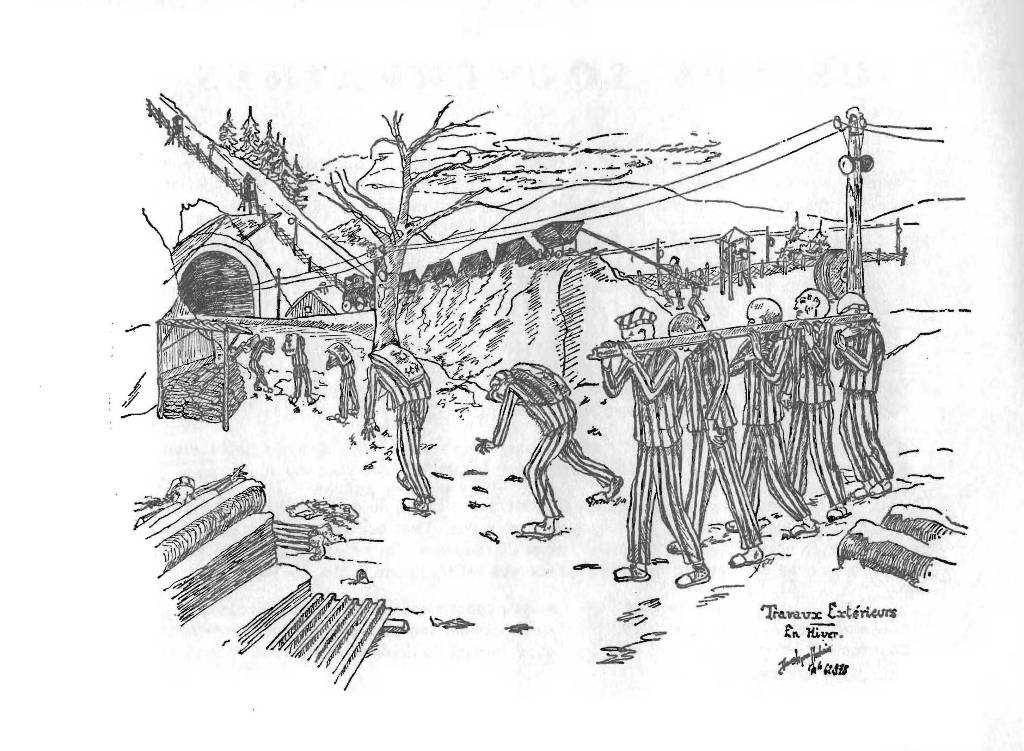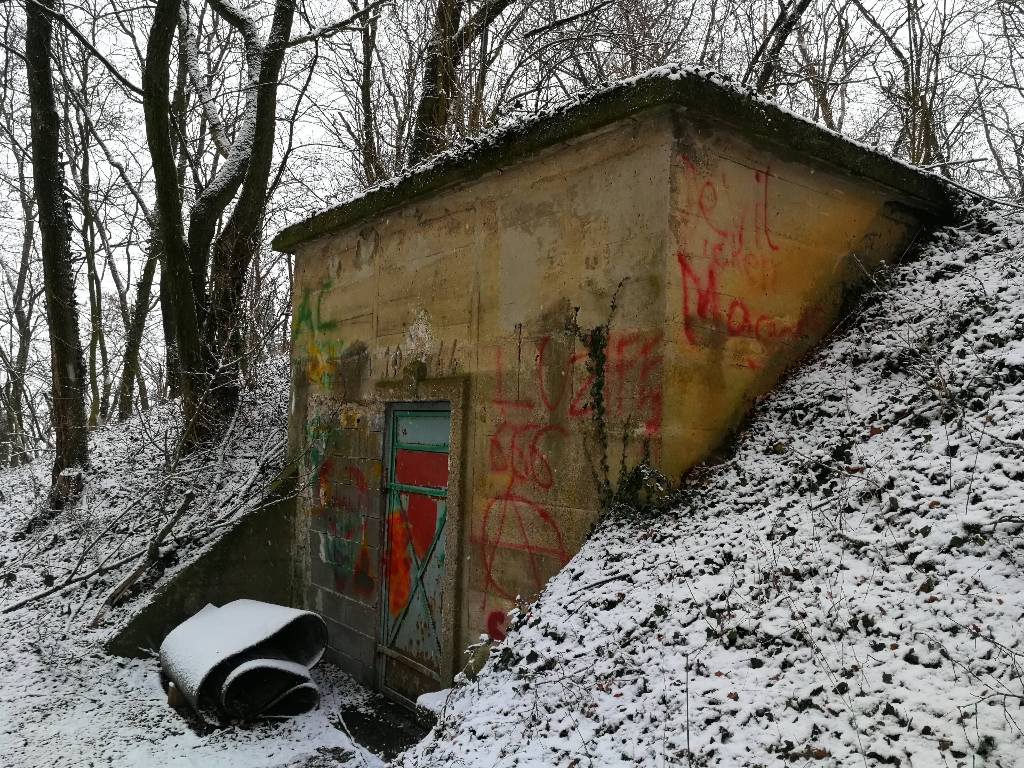Forced labour
The transports of prisoners from the Mauthausen concentration camp to Melk were composed according to the needs of the construction firms building the tunnel system outside Roggendorf. Most of the prisoners were immediately set to work in shifts in the tunnel construction. The prisoners worked in their thousands in the construction of the Roggendorf tunnel system. The drawing by Daniel Piquee-Audrain, ‘Travaux extérieurs en hiver’, shows forced labour outside Tunnel A. The Melk concentration camp prisoners were ‘leased’ by the SS camp command to the construction firms. Each company notified the SS of their daily need for workers, and work columns were put together in the camp according to these specifications. The SS charged the firms 6 Reichsmarks for every skilled worker and 4 Reichsmarks for labourers. The fees were transferred to the Reich Treasury.
The prisoners worked in their thousands in the construction of the Roggendorf tunnel system. The drawing by Daniel Piquee-Audrain, ‘Travaux extérieurs en hiver’, shows forced labour outside Tunnel A. The Melk concentration camp prisoners were ‘leased’ by the SS camp command to the construction firms. Each company notified the SS of their daily need for workers, and work columns were put together in the camp according to these specifications. The SS charged the firms 6 Reichsmarks for every skilled worker and 4 Reichsmarks for labourers. The fees were transferred to the Reich Treasury.
No matter what the weather conditions, the concentration camp prisoners were transported daily by train from Melk to Roggendorf to work as forced labourers. Special wooden loading ramps, ‘concentration camp stops’, were erected for this purpose, both in Melk (near the location of the present-day sportsground on Abt-Karl-Strasse) and in Roggendorf along the Western Railway in sight of the tunnel entrance. In the event of a delay, the prisoners would often have to wait outdoors for hours. If a train did not come at all, the prisoners would have to march to their forced labour.
In addition to the forced labour in the tunnels, the Melk concentration camp prisoners were also sent to work at a whole series of other sites. One of these was the ‘Hopferwieser Detachment’, where Melk prisoners travelled daily by train to Amstetten to cut down timber for use in shoring up the tunnel system.
 The water tower at the Kupferschmiedkreuz, a cross around 500 metres south of the concentration camp site, was built in autumn 1944 by prisoners and ensured the supply of water. Today it is one of the last few built remains in Melk. Photo: ZHZ Melk.In the town of Melk itself, concentration camp prisoners were used on various infrastructure building sites, for example a sewage plant near the camp grounds and a water tower for the camp’s drinking-water supply near the Kupferschmiedkreuz. The then town architect, Franz Sdraule, was entrusted with the construction of several of these projects. He was also provided with concentration camp prisoners for the work. Several prisoners also worked for the master-baker Franz Exel, who ran a bakery on Linzer Strasse, near the main square in Melk.
The water tower at the Kupferschmiedkreuz, a cross around 500 metres south of the concentration camp site, was built in autumn 1944 by prisoners and ensured the supply of water. Today it is one of the last few built remains in Melk. Photo: ZHZ Melk.In the town of Melk itself, concentration camp prisoners were used on various infrastructure building sites, for example a sewage plant near the camp grounds and a water tower for the camp’s drinking-water supply near the Kupferschmiedkreuz. The then town architect, Franz Sdraule, was entrusted with the construction of several of these projects. He was also provided with concentration camp prisoners for the work. Several prisoners also worked for the master-baker Franz Exel, who ran a bakery on Linzer Strasse, near the main square in Melk.